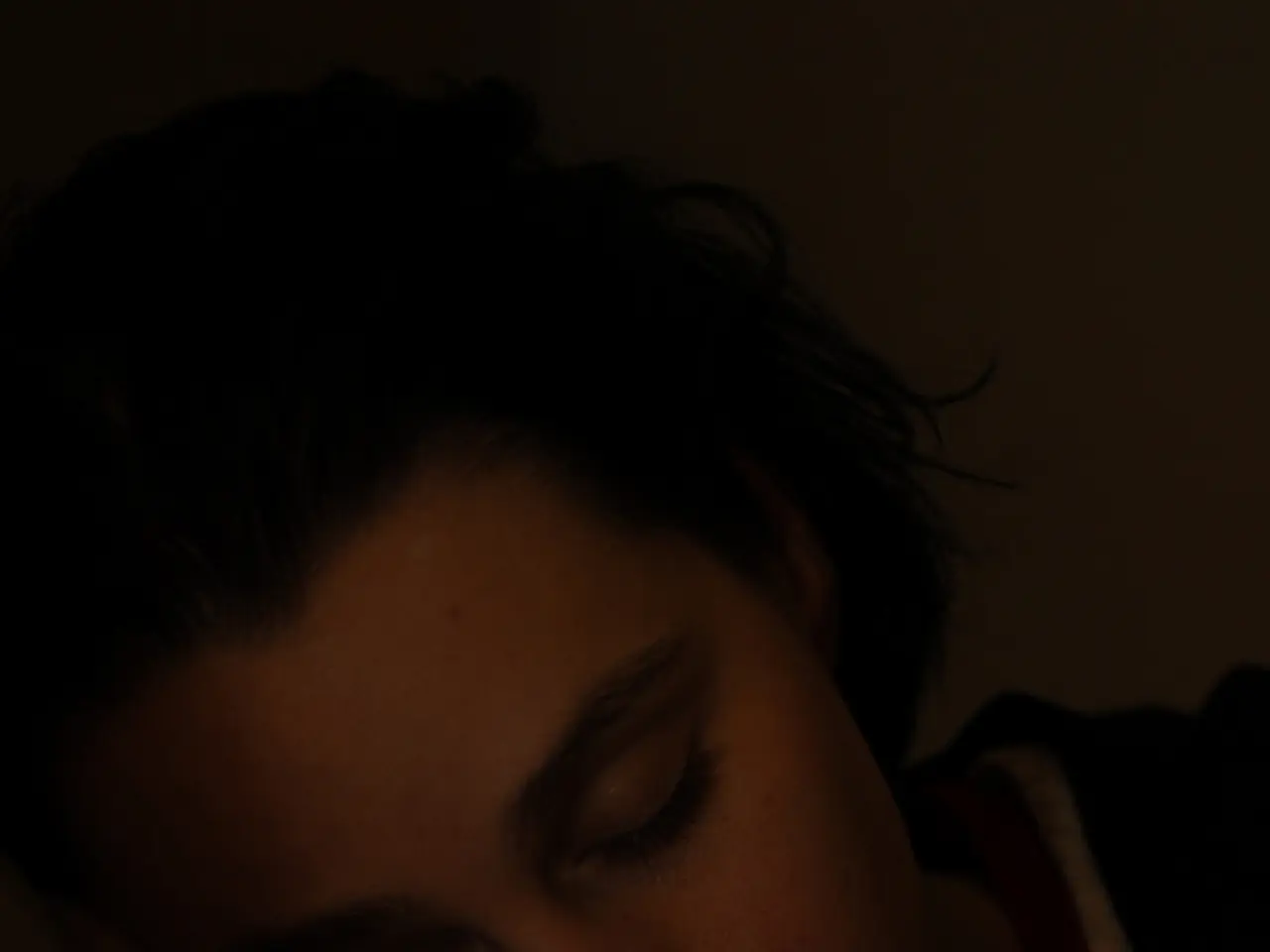Brainstem's Hidden Controller: Governing Sleep and Awareness Cycles
The reticular formation, a crucial part of the brain, plays a significant role in maintaining overall cognitive health and well-being. This complex network, with its component called the reticular activating system (RAS), is responsible for regulating sleep, alertness, and attention.
The reticular formation serves as the brain’s internal "alarm system," generating and maintaining wakefulness and alertness. It filters and prioritises sensory inputs to the cortex, ensuring that the brain stays responsive to important stimuli for sustained attention. Damage or dysfunction in this area can lead to serious impairments such as coma or loss of consciousness.
In the context of sleep regulation, the reticular formation controls the sleep-wake cycle, working alongside structures like the locus coeruleus (part of the RAS). The locus coeruleus plays a key role in arousal and is almost completely inactivated during rapid eye movement (REM) sleep, demonstrating its direct involvement in sleep-wake dynamics. Sleep deprivation can reduce neuron counts in this area, potentially causing lasting cognitive deficits.
Beyond alertness and sleep, the reticular formation impacts attention and cognitive flexibility by modulating cortical and subcortical circuits through the release of neurotransmitters such as norepinephrine from the locus coeruleus. This system influences attention, memory, behavioral inhibition, cognitive control, and emotional regulation, all of which are essential for healthy cognition and psychological well-being.
In summary, the reticular activation system in the reticular formation regulates alertness, attention, and wakefulness, providing a foundation for conscious cognitive function. The locus coeruleus, part of the reticular formation, modulates the sleep-wake cycle, arousal, and attention, with disruptions linked to neuropsychiatric disorders and cognitive impairment. Sleep quality maintained by reticular formation mechanisms is critical to overall brain health, as sleep deprivation negatively affects neurons in this system, with implications for cognitive and psychiatric health.
Disturbances in the function of the reticular formation can lead to various disorders related to alertness and attention, such as Attention Deficit Hyperactivity Disorder (ADHD) and certain forms of depression. The reticular formation contributes to the regulation of mood and emotion through its connections with the limbic system, the part of the brain that controls emotions.
Research continues to unravel the complexities of the reticular formation's involvement in sleep regulation, providing insights into the fundamental mechanisms of sleep and opening avenues for addressing various sleep-related disorders. The reticular formation's role in alertness is maintained by a balance of excitatory and inhibitory signals within the brain, primarily through neurotransmitters like acetylcholine, norepinephrine, and serotonin.
The reticular activating system (RAS), a key component of the reticular formation, sends continuous impulses to the cerebral cortex to keep the brain active and alert. The reticular formation's dysfunction can lead to various sleep disorders, such as insomnia, sleep apnea, and restless leg syndrome, which can have links to anomalies in the reticular formation's functioning.
The reticular formation's impact on alertness directly influences our attention and overall cognitive functions by regulating the flow of sensory information to the brain and filtering out irrelevant stimuli. The reticular formation's role in sleep is closely linked to various hormones and neurotransmitters that regulate sleep-wake cycles, such as serotonin, melatonin, norepinephrine, and dopamine. Neurons in the reticular formation release inhibitory neurotransmitters like GABA (gamma-Aminobutyric acid), which help reduce the activity of the brain's arousal centers, aiding the onset of sleep.
The mechanism by which the reticular formation induces sleep is a complex interplay of neural circuits and chemical signals, where during wakefulness, the reticular activating system (RAS) keeps the brain alert, and as we transition to sleep, these signals diminish, leading to a state of decreased arousal and consciousness. Understanding the intricacies of this process could lead to new treatments for sleep disorders and improvements in cognitive health.
- The role of the reticular formation in maintaining overall cognitive health and well-being includes regulating sleep, alertness, and attention.
- The reticular formation serves as the brain’s internal "alarm system," generating and maintaining wakefulness and alertness, filtering and prioritizing sensory inputs to the cortex.
- In sleep regulation, the reticular formation controls the sleep-wake cycle, working alongside structures like the locus coeruleus, which plays a key role in arousal.
- Sleep deprivation can reduce neuron counts in this area, potentially causing lasting cognitive deficits and linking to cognitive and psychiatric health issues.
- The reticular formation impacts attention and cognitive flexibility by modulating cortical and subcortical circuits through the release of neurotransmitters like norepinephrine.
- The reticular activation system in the reticular formation regulates alertness, attention, and wakefulness, providing a foundation for conscious cognitive function, and its dysfunction can lead to various disorders related to alertness and attention.
- Understanding the mechanism by which the reticular formation induces sleep could lead to new treatments for sleep disorders and improvements in cognitive health, as disturbances in this process can result in sleep disorders like insomnia, sleep apnea, and restless leg syndrome.




